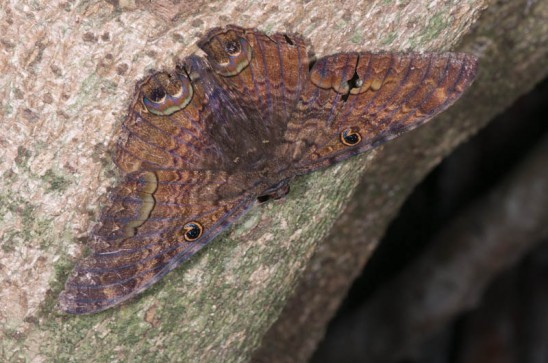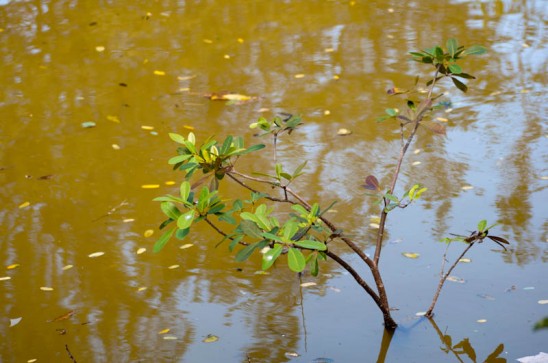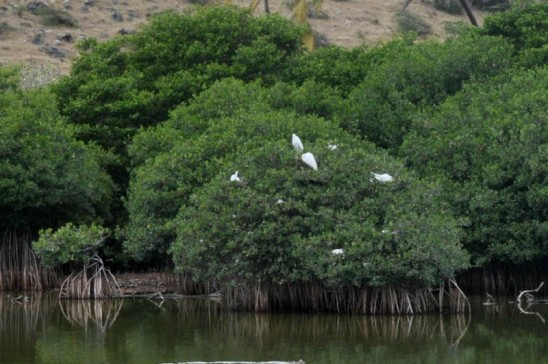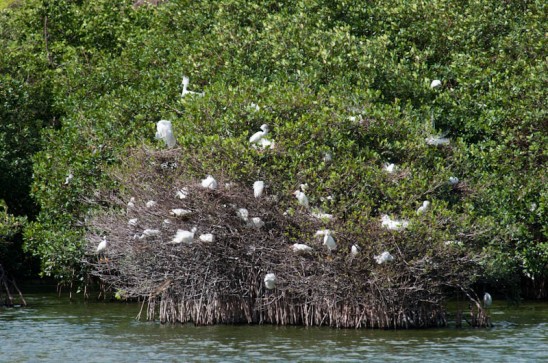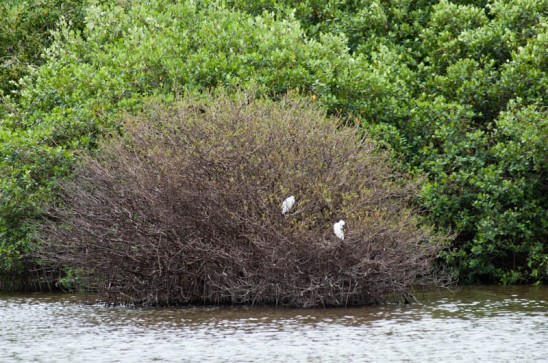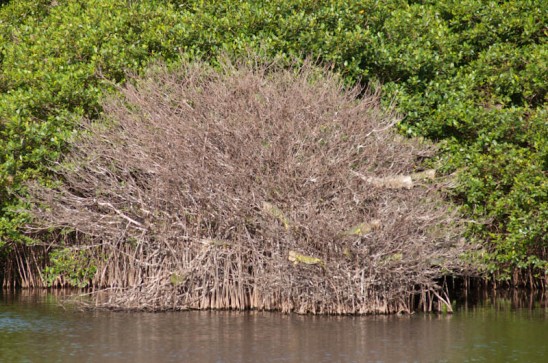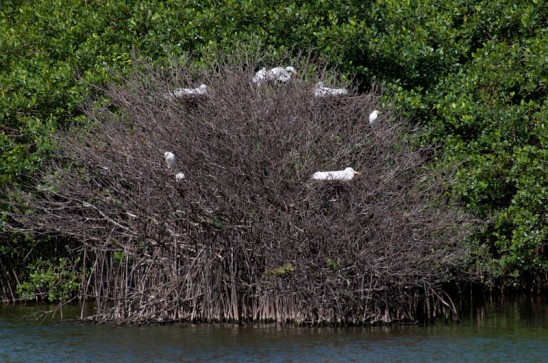Locally known as the woodslave, the turnip-tailed gecko (Thecadactylus rapicauda) is a large, native gecko that is seen less regularly than the introduced house gecko. It has huge eyes, partially-webbed feet and toes that are partially split and look like double toes.
Nothing being simple in St. Martin biology, since last year, there actually seem to be two species on the island. A new species (T. oskrobapreinorum) has been described that is known only from St. Martin, primarily distinguished by its coloration, light skin with distinct black spots. Although people have seen geckos like this on St. Martin for years, it has only recently been proposed as a new species.
Below are some photos of T. rapicauda. Given the close relationship between it and its newly-named relative, there is perhaps a bit of a mystery as to how they can coexist on the same island. For example, if T. oskrobapreinorum evolved on St. Martin from T. rapicauda how did it diverge if there was a population of T. rapicauda to breed with? Or perhaps T. oskrobapreinorum evolved in isolation on St. Martin and T. rapicauda was reintroduced more recently. If that’s the case, then does T. rapicauda represent a threat to T. oskrobapreinorum?



















































